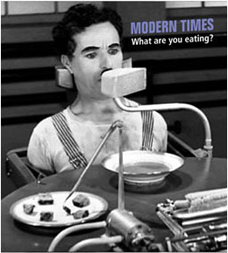Trade in processed food
Access to safe and nutritious food is essential for good health and is linked to Universal Health Coverage (UHC) and the United Nations Sustainable Development Goals (SDGs), particularly SDG 2: Zero Hunger
Access to safe and nutritious food is essential for good health and is linked to Universal Health Coverage (UHC) and the United Nations Sustainable Development Goals (SDGs), particularly SDG 2: Zero Hunger
A fat substitute can speed up the removal of carcinogens

<font face="Verdana, Arial, Helvetica, sans-serif" size="2">Eating at home isn't the in thing anymore. Hanging out is hip, especially in the mushrooming fast food joints that blister the skylines of India's cities. The urban middle classes with money to burn are redefining nouvelle cuisine. The costs are huge but few are counting the calories fewer still checking the nutrition chart.
The food processing industry is growing faster than <font class="UCASE">it</font> and pharmaceuticals.One of the implications of this growth is that industry is buying raw materials on a large scale affecting both supply of food, which is contracting, and prices, which are rising.
<img src="../files/images/20070331/36.jpg" ="valley" align="left"/>The price-nutrition dynamic plays out differentially in the developed and developing worlds. In the former, as a number of studies have noted, fast food constitutes a much greater proportion of the diet of the poor.
Data compiled by the Food and Agriculture Organization (FAO) show that in 2004, though production of most cereals decreased as compared to 1990, exports increased. Similarly, the production of pulses and groundnut decreased but exports increased. In both cases, domestic consumption too decreased. In the case of wheat, however, all three indicators showed a rise.<br>